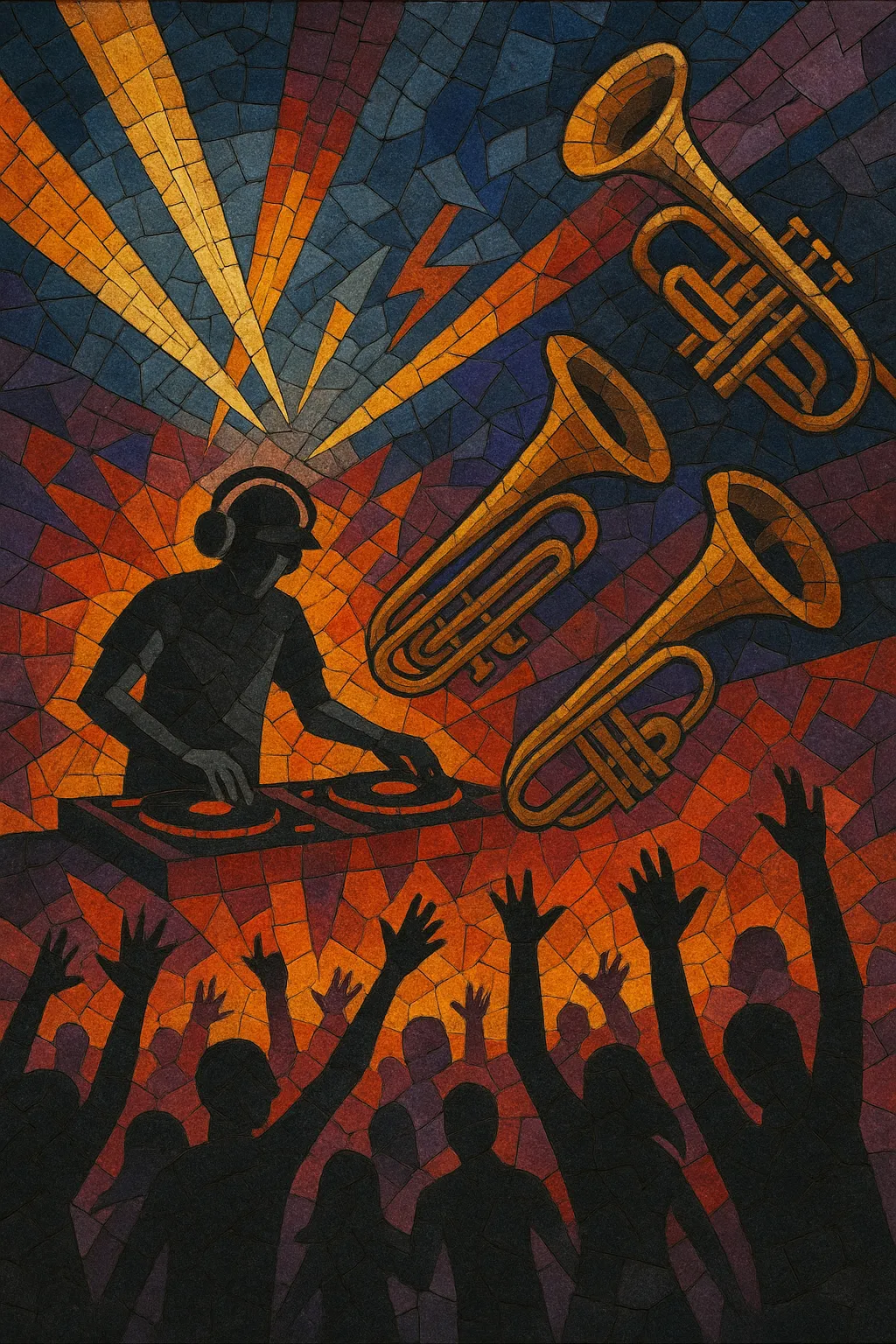Festival trap is a high-impact branch of EDM trap engineered for large festival stages. It merges hip‑hop trap’s 808 sub-bass, half‑time drum patterns, and rattling hi‑hats with big‑room/electro house build‑ups, supersized drops, and cinematic brass stabs and synth leads.
Designed for peak-time crowd reaction, the style emphasizes explosive tension-and-release: long risers and snare rolls crescendo into colossal drops built around tuned 808s, horn-like leads, and call‑and‑response hooks. Harmony is sparse and minor‑key, while arrangement prioritizes DJ‑friendly intros/outros, dramatic buildups, and multiple drop variations to energize festival audiences.
Festival trap took shape in the early 2010s as EDM DJs adapted hip‑hop trap aesthetics for big‑room festival contexts. Producers began translating the 808‑driven, half‑time feel of Southern hip‑hop trap into the EDM playbook—long buildups, tension risers, and explosive drops. A pivotal moment came in 2012 when Carnage popularized “Festival Trap” bootlegs of mainstage house tracks (e.g., turning 128 BPM big‑room hits into half‑time trap drops), helping codify the label and sound.
The style rapidly spread via SoundCloud and DJ promos. Acts like RL Grime, Flosstradamus, Baauer, Yellow Claw, and Keys N Krates delivered signature brass‑led drops, tuned 808s, and aggressive snare builds, securing slots on main festival stages (Ultra, EDC, Tomorrowland). Labels and collectives in the bass and EDM space (Mad Decent, Fool’s Gold, OWSLA affiliates) amplified the aesthetic, while DJ Snake’s high‑octane trap anthems further cemented festival trap’s crossover appeal.
As the sound dominated peak‑time sets, producers pushed it heavier (harder drums, harsher synth design) or more hybrid (borrowing dubstep sound design at trap tempos). This period seeded the rise of hard trap and hybrid trap, while parallel scenes like twerk at 100–110 BPM intersected in festival sets.
Festival trap remained a staple of mainstage bass music, evolving through crisper sound design, tighter low‑end, and more varied tempos (140–150 BPM half‑time being common). It influenced global scenes such as Brazilian trap‑funk crossovers and continued to inform the structure of modern bass‑heavy festival music.


